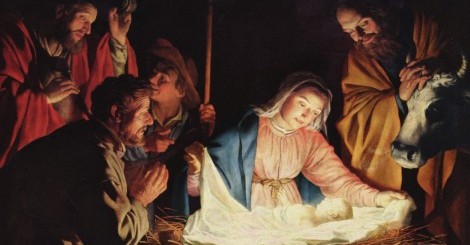
Well, this is interesting. Over in Science, we have the headline “Wealth may have driven the rise of today’s religions.” Meanwhile, the Huffington Post’s science blog says religious believers will become a world minority, and ultimately perhaps disappear entirely, thanks to economic prosperity. Seems like there’s a need to get the story straight.
Now, I’m sure there are ways to reconcile these results. They are population-level correlations from very different eras that require contextualization to be fully understood. But then, of course, that underlines the challenge of making predictions from these correlations; as the context changes, so might the relationship between economics and religion.
Ultimately, the premise that changes in one’s life situation can change one’s perspective on religion is a reasonable one; it’s broad enough to be practically unfalsifiable. Still, it does raise the question of what one seeks to get from religion; seeing others achieve those things while following a different sort of religion or no religion at all is legitimately a reason to reflect on one’s own beliefs or expectations.
The Christmas story is then a helpful reminder of what followers of Jesus can and cannot expect. Jesus was born into a very humble and temporary living circumstance. Shortly thereafter, he was a refugee from his homeland under the threat of death. As an adult, he led an itinerant life and frequently appeared to limit the growth of his ministry lest he attract attention prematurely. While not all his followers will have the same experience, it does provide a helpful calibration of the possibilities. What Christmas also reminds us is that God reached across the cosmos to become man in order to be known by men. No amount of wealth gained or lost can replace that knowledge.
Andy has worn many hats in his life. He knows this is a dreadfully clichéd notion, but since it is also literally true he uses it anyway. Among his current metaphorical hats: husband of one wife, father of two teenagers, reader of science fiction and science fact, enthusiast of contemporary symphonic music, and chief science officer. Previous metaphorical hats include: comp bio postdoc, molecular biology grad student, InterVarsity chapter president (that one came with a literal hat), music store clerk, house painter, and mosquito trapper. Among his more unique literal hats: British bobby, captain’s hats (of varying levels of authenticity) of several specific vessels, a deerstalker from 221B Baker St, and a railroad engineer’s cap. His monthly Science in Review is drawn from his weekly Science Corner posts — Wednesdays, 8am (Eastern) on the Emerging Scholars Network Blog. His book Faith across the Multiverse is available from Hendrickson.

Leave a Reply